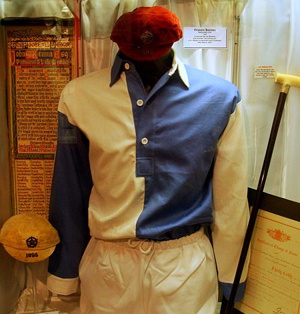
There are so many fascinating aspects to the world of football that most people never even think about. Elsewhere on the site we’ve looked at how not all football pitches are the same size, for example.
We’ve investigated the the different types of grass that make up a pitch and we’ve even explored what players do once they’ve retired from the game. Yet there’s another part of the game that we haven’t touched on but that can tell us so much about a team’s history and the psychology behind their past: The colour of the kit that they wear.
A football kit is arguably the most important thing about a club, when you really think about it. Their entire marketing, from websites to memorabilia, is based around the colour of their kit. How many replica jerseys they sell can live or die depending on its design, with clubs often taking advantage of this and releasing a new kit every year to generate sales income. But what should we know about football kits that we perhaps don’t already?
Here we’ll have a look at this most crucial, but perhaps undervalued aspect of the footballing world.
Football Team Home and Away Kit Colours
England
| Team | Home | Away |
|---|---|---|
| Accrington Stanley | Red | Blue & White Stripes |
| AFC Bournemouth | Red & Black Stripes | Sky Blue |
| AFC Wimbledon | Blue | White |
| Arsenal | Red & White | Yellow & Black |
| Aston Villa | Claret & Blue | White |
| Barnet | Orange & Black | White & Black |
| Barnsley | Red & White | White |
| Barrow AFC | White & Blue | Black & Grey |
| Birmingham City | Blue | Orange & Black |
| Blackburn Rovers | Blue & White | Purple |
| Blackpool | Orange & White | White & Orange |
| Bolton Wanderers | White & Black | Black & White |
| Bradford City | Yellow & Claret Hoops | White |
| Brentford | Red & White Stripes | Dark and Light Blue |
| Brighton & Hove Albion | Blue & White H | Orange |
| Bristol City | Red & White | Yellow |
| Bristol Rovers | Blue & White Squares | Grey & Black |
| Burnley FC | Claret & Light Blue | White & Blue Stripes |
| Burton Albion | Yellow & Black | Black |
| Bury | White & Blue | Blue, Grey and Black |
| Cambridge United | Amber & Black | White & Black |
| Carlisle United | Blue Patterned | Yellow, Pink, Black |
| Charlton Athletic | Red & White | Black & Dark Blue |
| Chelsea | Blue | Dark Blue and White |
| Cheltenham Town | Red & White | Blue |
| Chesterfield | Blue & White | White & Green |
| Colchester United | White & Blue | Royal Yellow |
| Coventry City | Sky Blue & White Stripes | Purple |
| Crawley Town | Red & White | White & Black |
| Crewe Alexandra | Red | Green & Black |
| Crystal Palace | Red & Blue | White with Red/Blue Detail |
| Dagenham & Redbridge | Red & Blue | White & Red |
| Derby County | White & Black | Dark & Light Blue Cheque |
| Doncaster Rovers | Red & White Hoops | Dark Blue & Red Hoops |
| England | White | Navy Blue |
| Everton | Blue and White | Pink and Black |
| Exeter City | Red & White | Grey |
| Fleetwood Town | Red & White | Light Green & Grey |
| Forest Green Rovers | Green & Black | Pink & Black |
| Fulham | White & Black w/ Red Detailing | Turquoise and Blue |
| Gillingham | Blue & White | Black & White |
| Gloucester City | Black & Yellow | White, Red & Black |
| Grimsby Town | Black & White | Red |
| Harrogate Town | Yellow & Black | Blue |
| Hartlepool United | Blue & White Stripes | Black & Red Stripes |
| Huddersfield Town | Blue & White Stripes | Light Green |
| Hull City | Orange & Black | White |
| Ipswich Town | Blue & White | Orange |
| Kingstonian | Red, White and Black | Yellow |
| Leeds United | White | Blue with Pattern |
| Leicester City | Blue & White | Black with Blue Sash |
| Leyton Orient | Red | White |
| Lincoln City | Red & White Stripes | White & Green |
| Liverpool | Red with White Detail | Green & White Quarters |
| Luton Town | Orange & Black | White |
| Macclesfield Town Football Club | Blue & White | Red & Black |
| Manchester City | Sky Blue & White | White |
| Manchester United | Red & White | Green & White Stripes |
| Mansfield Town | Yellow & Blue | Orange |
| Middlesbrough | Red | Blue & Yellow |
| Millwall | Blue & White | White & Blue |
| MK Dons | White | Red |
| Morecambe | Red | White & Black |
| Newcastle United | Black & White stripes | Green |
| Northampton Town | Maroon & White | White & Maroon |
| Norwich City | Yellow & Green Hoops | Dark Green |
| Nottingham Forest | Red | Blue & White Waves |
| Notts County | Black & White Stripes | Blue |
| Oldham Athletic | Blue & White | Orange & Black |
| Oxford United | Yellow & Blue Pinstripe | Red & Black Stripes |
| Peterborough United | Blue | White & Pink |
| Plymouth Argyle | Green & Gold | White & Green |
| Port Vale | White | Gold |
| Portsmouth | Blue & White | White & Blue |
| Preston North End | White & Blue | Yellow |
| Queens Park Rangers | Blue & White Hoops | Red & Black Hoops |
| Reading | Blue & White Hoops | White |
| Rochdale | Blue & White | Red |
| Rotherham United | Red & White | Black & Grey |
| Salford City FC | Red | Black |
| Scunthorpe United | Claret & Blue | Black & Yellow |
| Sheffield United | Red & White Stripes | Black |
| Sheffield Wednesday | Blue & White Stripe | White |
| Shrewsbury Town | Blue | Red & Blue |
| Southampton | Red & White | White & Green |
| Southend United | Dark Blue | Sky Blue & Dark Blue |
| Stevenage | Red & White Sash | Purple |
| Stockport County | Blue & White | Mint Green |
| Stoke City | Red & White stripes | Dark Blue & Green |
| Sunderland | Red & White Stripes | Yellow & Blue |
| Sutton United | Yellow | Turquoise |
| Swindon Town | Red | Dark Blue with Grey Pinstripes |
| Tottenham Hotspur | White | Black |
| Tranmere Rovers | White with Blue | Maroon & Blue |
| Walsall | Red | White & Red |
| Watford | Yellow & Black | White & Black |
| West Bromwich Albion | Navy Blue & White Stripes | Navy & Red |
| West Ham United | Claret & Blue | Black |
| Wigan Athletic | Blue & White Stripes | Red & Black |
| Wolverhampton Wanderers | Gold & Black | Red |
| Wycombe Wanderers | Dark & Light Blue Quarters | Green & White Stripes |
| Yeovil Town | Green & White | White & Green |
| York City | Red & Blue | White & Maroon |
Wales
| Team | Home | Away |
|---|---|---|
| Cardiff City | Dark & Light Blue | Purple |
| Newport County | Yellow & Black Pinstripe | White & Grey |
| Swansea | White & Black | Blues |
| Wales | Red & White | Black and Green |
| Wrexham A.F.C | Red & White | White & Green Stripe |
Scotland
| Team | Home | Away |
|---|---|---|
| Aberdeen | Red | Dark Blue |
| Celtic | Green & White | Green & Dark Green |
| Dundee | Blue & White | Dark Blue & Sky Blue |
| Dundee United | Orange & Black | White & Orange |
| Hamilton Academical | Red & White Hoops | Blue & Black Stripes |
| Heart Of Midlothian | Maroon & White | Blue & Maroon |
| Hibernian | Green & White | White & Green Stripes |
| Inverness Caledonian Thistle | Blue & Red Stripe | White & Sky Blue |
| Kilmarnock | White & Blue Stripes | Blue, Grey & Red |
| Livingston | Black & Yellow | White & Black |
| Motherwell | Yellow & Orange | Black & Yellow Stripes |
| Partick Thistle | Orange & Yellow Stripes | White & Black with Red/Yellow Flash |
| Queens Park FC | Black & Whte | Red |
| Rangers | Blue & White | Black & Red |
| Ross County | Dark Blue White Stripes | Yellow |
| Scotland | Blue & Wihte | Yellow & Blue |
| St Mirren | Black & White Stripes | Red |
| St. Johnstone | Blue & White | Red & White Stripes |
ROW
| Team | Home | Away |
|---|---|---|
| AC Milan | Black & Red Stripes | White |
| ACF Fiorentina | Purple | White |
| AFC Ajax | Red & White | Blue & Black |
| AIK Fotboll | Black, Yellow & White | White with Black/Yellow Sash |
| AS Monaco | Red & White | Black |
| AS Roma | Maroon | White |
| AS Saint-Étienne | Green | White |
| Atalanta | Blue & Black | White, black & blue |
| Athletico Bilbao | Red, White & Black | Green |
| Atlético Madrid | Red, White & Blue | Dark Blue & Red |
| AZ Alkmaar | Red & White | Black |
| Azerbaijan | Red | Blue |
| Barcelona | Blue & Red Stripes | Lilac |
| Bayer Leverkusen | Red & Black Stripes | White |
| Bayern Munich | Red | Black |
| Benfica | Red & White | White & Black |
| Beşiktaş | White & Black with Red Stripe | Black |
| Borussia Dortmund | Yellow & Black | Black |
| Borussia Mönchengladbach | White & Green | Green Patterned |
| Celta Vigo | Light Blue & White | Red & White |
| Club Brugge KV | Blue & Black | Yellow |
| Croatia | Red & White | Blue & Black |
| CSKA Moscow | Blue & Maroon | White |
| Denmark | Red & White | White & Red |
| Deportivo Alavés | Blue & White | White & Blue |
| Dinamo Zagreb | Blue | Yellow |
| Dynamo Kyiv | White | Blue & White |
| Eintracht Frankfurt | Black with Red | Red with black |
| Espanyol | Blue & White Stripes | Purple |
| FC Baltika Kaliningrad | White & Blue | Blue |
| FC Basel 1893 | Red & Blue | White |
| FC Cologne | White | Red |
| FC Copenhagen | White & Blue | Black, White & Blue |
| FC Porto | Blue & White Stripes | Blue & Black |
| FC Red Bull Salzburg | Red | Blue & Yellow |
| FC Rostov | Blue | Yellow |
| FC Schalke 04 | Blue & White | White & Light Blue |
| FC Shakhtar Donetsk | Orange, Dark Blue & Black | Orange, Black & White |
| FC Steaua București | Red & Blue | White |
| FC Ural | Orange & Black | Black |
| Fenerbahçe | Yellow & Blue | Grey |
| Feyenoord | Red, White & Black | Grey, Black & Yellow |
| Fortuna Düsseldorf | Red | White with Red |
| France | Blue and White | White & Blue |
| Galatasaray | Red & Orange | Black & Red/Orange Stripe |
| Gent | Blue | Orange |
| Girondins de Bordeaux | Dark Blue & Black | White |
| Greece | White & Blue | Blue & White |
| Hamburg SV | White, Red & Blue | Blue & Black Stripes |
| Hertha Berlin | Blue & White | Dark Blue |
| Hoffenheim | Blue | White |
| Hungary | Red, white & green | White, red & green |
| Inter Milan | Black & Blue Stripes | White & Blue |
| İstanbul Başakşehir F.K. | Orange & Blue | Blue & Orange |
| Juventus | Black & White | Black Patterned |
| KRC Genk | Blue & White | White & Blue |
| Lechia Gdańsk | White with Green Pattern | Dark Grey & Green |
| Legia Warsaw | White | Green |
| Lille OSC Métropole | Red & Dark Blue | White |
| Lokomotiv Moscow | Green & Red | White |
| Napoli | Blue & White | White & Gold |
| Netherlands | Orange | Blue |
| Northern Ireland | Green & White | Light Blue & Dark Blue |
| OGC Nice | Red & Black Stripes | Black |
| Olympiacos | Red & White | Blue |
| Olympique de Marseille | White & Light Blue | Sky Blue & Dark Blue |
| Olympique Lyonnais | White, Red & Blue Stripe | Red Speckled |
| Paris Saint-Germain | Navy Blue & Red | White |
| PFC Ludogorets Razgrad | Green | Turqoise |
| PSV Eindhoven | Red & White Stripes | Purple & Green |
| Qarabag FK | Black | White |
| R.S.C. Anderlecht | Purple | White |
| RB Leipzig | Red & White | Black & Colour Flecks |
| RC Lens | Red & Yellow Stripes | Black & Green Stripes |
| Real Madrid | White | Dark Blue |
| Real Sociedad | Blue & White Stripes | Dark Red |
| Red Star Belgrade | Red & White | Dark Blue |
| Republic Of Ireland | Green & White | White & Green |
| Romania | Yellow with Red | Red with Yellow |
| Rubin Kazan | Red | Green |
| Russia | Maroon | White & Blue |
| SD Eibar | Claret & Blue Stripes | Green & Black Stripes |
| Serbia | Red | White with Red |
| Sevilla | White & Red Stripes | Red & White Stripes |
| Slavia Prague | Red & White | Blue |
| Spartak Moscow | Red & White | Black & Red |
| Sporting Club de Portugal | Green Hoops, White & Black | Yellow & Black |
| SS Lazio | Light Blue & White | Dark Blue |
| Sweden | Yellow & Blue | Navy Blue & Grey |
| Toulouse | Purple & White | Pink & Purple |
| TSV 1860 München | Blue & White | White & Black |
| Turkey | Red | White |
| Valencia CF | White & Black | Maroon & Black |
| VfB Stuttgart | White & Red | Red & Black |
| Villareal | Yellow | Dark Blue |
| Zenit St. Petersburg | Blue | White & Light Blue |
Why Do We Need Kit Colours ?
When we start looking at football kits and their importance it’s crucial that we start with the basics: Why does what kits look like even matter?
Finding A Teammate
 This is perhaps the most important aspect of all when it comes to kit colours. Football is a fast-paced game that seems to be getting faster with every passing season. Sure a goalkeeper or defender might seem to have an age on the ball to pick out a teammate with a pass, but once you get into the final third of the pitch everything happens so quickly that you don’t have time to look up and make sure you know exactly who you’re passing to. Players will often see little more than the boots and socks of other people on the pitch, which is why it’s crucial that the two teams don’t have socks of the same colour.
This is perhaps the most important aspect of all when it comes to kit colours. Football is a fast-paced game that seems to be getting faster with every passing season. Sure a goalkeeper or defender might seem to have an age on the ball to pick out a teammate with a pass, but once you get into the final third of the pitch everything happens so quickly that you don’t have time to look up and make sure you know exactly who you’re passing to. Players will often see little more than the boots and socks of other people on the pitch, which is why it’s crucial that the two teams don’t have socks of the same colour.
Every now and then this will lead to something interesting, such as the away team wearing their normal kit apart from the socks, which won’t match in order to avoid clashing with the home side. One of the most famous examples came in the 1995-1996 season when Manchester United had an away kit with a grey top. They had failed to win a game when wearing it and played Southampton in April of ’96 with the grey kit on. They were 3-0 down at half-time and their manager, Alex Ferguson, made the unprecedented decision to get them to swap kits before the second-half. After the game he said, “The players…said it was difficult to see their team-mates at distance when they lifted their heads”.
Helping Referees
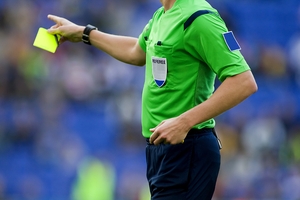 Another important part of why teams wear differently coloured kits from each other is the referee. Yes it’s crucial that they can tell each other apart, but it’s also vital that a referee and his assistants are able to tell which player committed an offence. Say two players jump up to a head a ball and they’re wearing the same colour on their sleeves. How will the referee know which one of them touched the ball with their hand?
Another important part of why teams wear differently coloured kits from each other is the referee. Yes it’s crucial that they can tell each other apart, but it’s also vital that a referee and his assistants are able to tell which player committed an offence. Say two players jump up to a head a ball and they’re wearing the same colour on their sleeves. How will the referee know which one of them touched the ball with their hand?
Likewise, when two players are tussling for the ball on the line and one of them kicks it out of play, how is the assistant supposed to know whether it’s a goal-kick or a corner if they’ve got the same colour socks on? Interestingly the Premier League has had different rules over kit colours than competitions such as the FA Cup in the past. In the FA Cup two sides couldn’t wear the same colour shorts, whilst in the league they could as a player can’t commit a foul with that area of the body so the referee didn’t need to know whose shorts belonged to whom.
Psychological Advantage
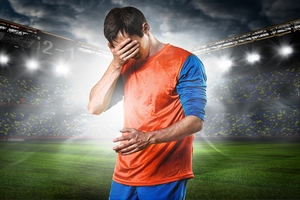 Bill Shankly is widely considered to be the father of modern day Liverpool Football Club. He arrived when the team was struggling and transformed Anfield into what he called a ‘bastion of invincibility’. One thing that he did that not everyone knows about, however, is changing the colour of kit that the Merseysiders played in. Originally they played in a red top with white shorts and white socks. In November of 1964 the Scot decided to mix things up, asking his players to get rid of the white and go for all red instead.
Bill Shankly is widely considered to be the father of modern day Liverpool Football Club. He arrived when the team was struggling and transformed Anfield into what he called a ‘bastion of invincibility’. One thing that he did that not everyone knows about, however, is changing the colour of kit that the Merseysiders played in. Originally they played in a red top with white shorts and white socks. In November of 1964 the Scot decided to mix things up, asking his players to get rid of the white and go for all red instead.
As the story goes, Shankly threw a pair of red shorts to his captain and the club centre-half and told him to put them on. He looked at Yeats and said, “Christ, Ronnie, you look awesome, terrifying. You look 7ft tall. The first time Liverpool played in all-red they beat Anderlecht 3-0 in the European Cup. That was also the season that they won the FA Cup for the first time, beating Leeds United in the final. Obviously not every team that has won something in the sport has played in red, but different teams and managers will have their own reasons for believing that kits can have a psychological impact on their players and on the opposition.
Money
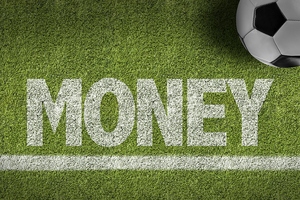 Money has always been important to success in football. Yet since the arrival of Roman Abramovich at Chelsea that has become even more apparent, with the team that has spent the most money on wages almost always winning their respective league. Supporters love to buy replica kits and clubs enjoy it when they do because that’s money virtually straight into their coffers. It’s not hard to do the maths. Even if a club only earned 50% of the value of the shirts they sell then 1000 shirts at £40 each would £20,000 into their bank.
Money has always been important to success in football. Yet since the arrival of Roman Abramovich at Chelsea that has become even more apparent, with the team that has spent the most money on wages almost always winning their respective league. Supporters love to buy replica kits and clubs enjoy it when they do because that’s money virtually straight into their coffers. It’s not hard to do the maths. Even if a club only earned 50% of the value of the shirts they sell then 1000 shirts at £40 each would £20,000 into their bank.
Nowadays a lot of the top clubs release a new kit every single summer, forcing fans to dip into their pockets on an annual basis. Worse, sides often have more than one kit on offer. It’s not unusual for a team to have a choice of three different kits that the most loyal supporters have to shell out for if they want complete collections. It’s not a problem for the clubs, though, as it simply increases that particular revenue stream for them. Sell enough kits around the world and they can add millions of pounds to the bottom line. It’s why you’ll often find clubs opting for an outrageous colour for their third kit. It makes it more interesting and exciting for a supporter to buy a bright green kit than a white, red or blue one that they’ve bought plenty of times before.
Exploring Kit Colours
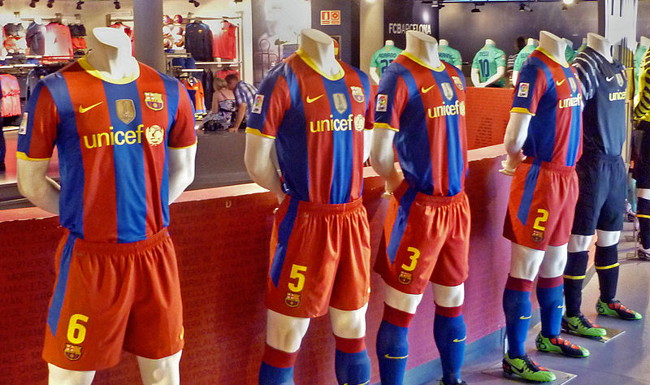
Now that we have a bit more information about why kits matter in general, let’s have a look at some of the more interesting stories regarding how teams ended up wearing the colour of kits that they wear. When the Sheffield Rules were written down for the first time in 1857 they made a reference to teams being able to distinguish themselves from each other. One rule stated, “Each player must provide himself with a red and dark blue flannel cap, one colour to be worn by each side”.
Plenty of football teams emerged from cricket clubs, so the footballers would wear their cricket whites with a sash, cap or scarf over it in order to make clear which team they played for. Other clubs were formed from school teams, so they began life by wearing the colours of the school uniform. For example, two of the founders of Blackburn Rovers went to New Maldon School, whose colours were blue and white. Even to this day Rovers play in those two colours. But what other examples are there of where clubs got their colours from?
Barcelona
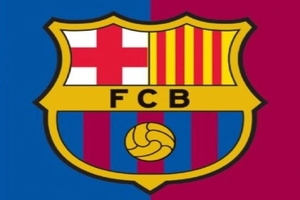 FC Barcelona was formed in November 1899. At one of the new club’s first meetings the colour of kit they would wear was discussed and one of their players and director Arthur Witty suggested to the club’s founder, Joan Gamper, that they should play in blue and red.
FC Barcelona was formed in November 1899. At one of the new club’s first meetings the colour of kit they would wear was discussed and one of their players and director Arthur Witty suggested to the club’s founder, Joan Gamper, that they should play in blue and red.
It’s believed that this was because they were the colours of the rugby team of Merchant Taylors School in Liverpool, for whom Witty had once played. Happily they were also the colours of FC Basel, a team that Gamper had played for prior to his move to Barcelona, so he saw no reason to object to the suggestion.
Arsenal
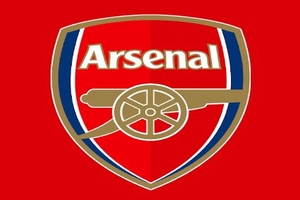 The story of Arsenal’s decision to end up wearing a red kit is essentially one of thriftiness. The club was formed in 1886 and, before it turned professional, a number of players from Nottingham Forest moved to London to play for a side that was then known as Dial Square FC.
The story of Arsenal’s decision to end up wearing a red kit is essentially one of thriftiness. The club was formed in 1886 and, before it turned professional, a number of players from Nottingham Forest moved to London to play for a side that was then known as Dial Square FC.
They brought their Forest kits with them and, because there were a few of them, the Arsenal hierarchy decided the most cost effective way to get a uniform kit for all players was simply to wear the same colours as the ex-Forest players. So even to this day Arsenal owe the fact that the play in red to Nottingham Forest and some owners who needed to do things as cheaply as possible.
Juventus
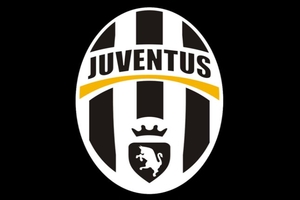 A not dissimilar, though perhaps even more bizarre, story is the reason behind why Juventus play in black and white kits. Things could have been so different for the Old Lady of Italian football had they stuck with their original kit. When they first started playing they wore pink tops with black ties, a top made by one of the players’ fathers. The problem was that the colour faded too quickly with every wash so they needed something easier to maintain.
A not dissimilar, though perhaps even more bizarre, story is the reason behind why Juventus play in black and white kits. Things could have been so different for the Old Lady of Italian football had they stuck with their original kit. When they first started playing they wore pink tops with black ties, a top made by one of the players’ fathers. The problem was that the colour faded too quickly with every wash so they needed something easier to maintain.
One of the team members was an Englishman named John Savage and one of his friends lived in Nottingham. Savage contacted him and asked him to send some kits over to Italy. He duly obliged and, being an Notts County fan, sent a load of black and white striped shirts from the club he loved. Juve have played in that colour ever since.
Blackpool
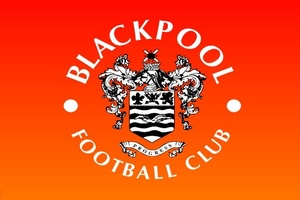 Not all club’s owe their kit colours to a more established team.
Not all club’s owe their kit colours to a more established team.
Blackpool came together as a club in 1887 and nowadays are known as the tangerines because of their orange kit, but they didn’t start wearing that until 1923. Before then they tried numerous different kits, starting in blue and white stripes and then moving to red or white after the turn of the century.
Albert Hargreaves, a referee, went to the Netherlands and was impressed by them wearing a bright orange top. When he returned to the UK he told the Seasiders that they should start wearing orange and they have done so ever since.
Referees
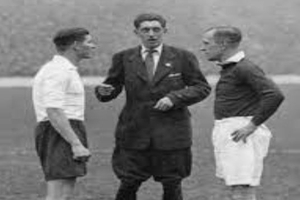 Here’s a fact for you: As recently as the 1950s it was entirely common for referees to wear a blazer whilst they were officiating football matches. They would wear black tops except for on rare occasions when one of the teams competing was wearing black, in which case they would usually have worn red instead.
Here’s a fact for you: As recently as the 1950s it was entirely common for referees to wear a blazer whilst they were officiating football matches. They would wear black tops except for on rare occasions when one of the teams competing was wearing black, in which case they would usually have worn red instead.
Those options didn’t change until the 1994 World Cup when FIFA gave their officials a choice of burgundy, yellow and white. Likewise, the formation of the Premier League saw referees allowed to wear green tops. Nowadays FIFA allow officials to wear one of five different colours, namely black, red, yellow, green or blue.
